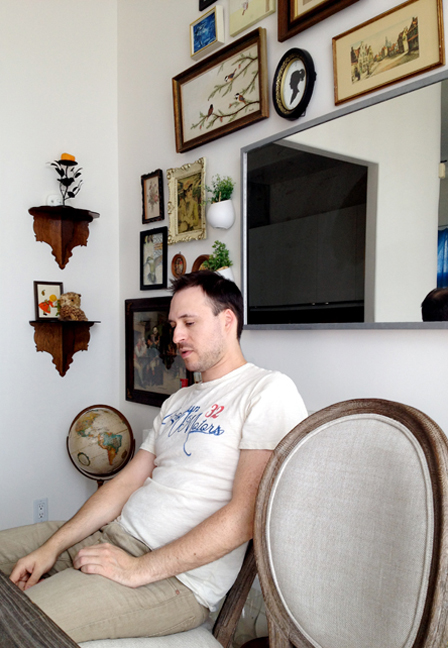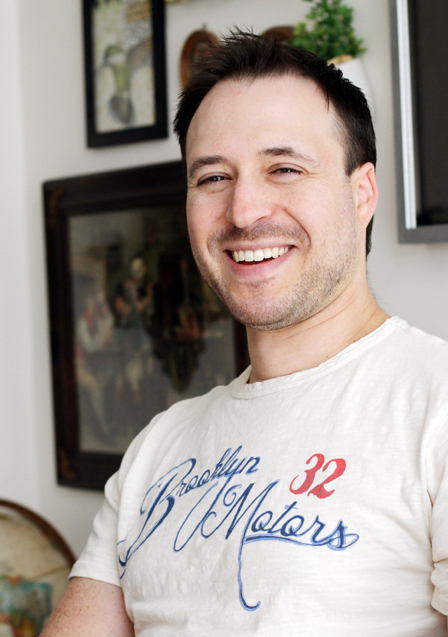Television writer Jordan Rosenberg shared his secrets on the writing process with me when I was in California last month. He describes it as “working through the wrong to get to the right.”
There are plenty of books out there on how to actually format a script for the screen, so if you are looking for basics on that, you won’t necessarily find them here. But what Jordan has shared is a look into his own process as a working television writer, and the methods he has employed and stayed continually, well… employed. It fascinated me to see the specific practices that ground the writing process in a way that others in the industry appreciate, and that can consistently yield results.
Without further adieu, here is his step-by-step guide to screenwriting:
1) The idea. Either you have received a writing assignment, or given yourself one. What you’re going to write about appears. You should already have a pretty good sense of your approach/angle, and get a clear sense of the idea.
2) Identify your audience. If this is an assignment, it should already be clear. Otherwise, you’ll need to define it for yourself. Is this for young adults? Is it a comedy or a drama?
3) What is it about? What is the world or environment your characters will inhabit? What kind of people are they?
Jordan says, “There’s a reason trailers often start with a voiceover saying, ‘In a world where…,’ and it’s because you really need to know the world your story is creating.”
4) Put something out there. It’s very difficult to go from an abstract idea to a concrete one, so go ahead and put something specific out there for yourself or others, and then feel whether it’s any good. The abstract themes you’re so heroically attempting to touch on will be easier to draw out from the concretes in your text, and it’s not really possible to write for the screen the other way around.
“In the room [the story room of a television show where the writers discuss the program], you need concretes or you’ll drive everyone crazy. You can’t present an abstraction. Make it into something, even if it’s the bad version of it,” Jordan advises.
What happens? Who says what? Just put something down, even if it’s not the best idea — even if it’s the worst idea! You can come up with better ones based on that one.
(Recently, I read an article on Medium about this very topic called, McDonald’s Theory. If someone goes ahead and makes the worst possible lunch suggestion, everyone is freed up to come up with much better ideas.)
5) Write your story break (outline). You want to make a note of each and every beat in every scene for 25-35 scenes. A beat can be defined loosely as a moment where something lands, or where a scene “turns” from one emotion to its opposite.
Jordan uses notebooks and shower crayons a lot at this stage of the game, so he can start getting ideas out of his head and out onto the page, so to speak. He warns against opening your script-editing software too soon — the formatting “looks pretty,” and can make him feel boxed in.
6) Research. Work in an environment where you’re comfortable exploring, and where you have things to draw from. Allow the random things you encounter to serve as fodder.
7) Identify the lead character. Who can take you through this story? Ask yourself what you really want to write about and how this story would best be told.
8) The messy part. Getting the story out of his head and down on the page sounded to me like the messiest part of Jordan’s process. He told me that while he’s coming up with characters, “they come in no special order, and the beats get all mixed up.” Going back and forth between jotting things down, getting inspired, and doing more research go around and around and in no particular order for some time.
Jordan introduced me to a term he loves, “the swiss cheese approach.” Presumably, your story will have holes in it while you work, like swiss cheese. You have to try different ways of filling the holes, whether through research, changes in the characters or changes in the plot. “You’re always drawing on something,” Jordan assures me of this otherwise nebulous point in the process.
9) Build out the scenes. Referring to your outline, fill in the story with the exploratory work you’ve done in step 8. The beginning of the scene is usually the hardest. “How does someone walk into the room?” Jordan asks, demonstrating the point.
At this stage, he describes the writing as “goop, where it’s always too long and the pieces don’t quite fit together yet.” He uses a plain text editor window on his computer to start getting scenes and ideas for dialogue written down. This keeps him feeling free creatively.
10) The long version. Once the outline has been fleshed out with some consistency, Jordan begins cutting and pasting his text editor notes into the script editor and formatting them into a long version of his screenplay. He adds scene direction and shortens the dialogue as he goes.
11) Take a break. Ideally, you want to get some space from the script before launching into revising it. When I’m coaching writers, I recommend doing something else for a full month, if possible. If you’re on deadline, or you just can’t pull yourself away, at the very least, give it to someone else to read, and get a good night’s sleep before looking at it again.
12) Be obsessive about cutting things. (This step will be much easier if you have taken the space recommended in Step 11.) You want to make it as tight as possible, with your focus on the flow first and foremost. Jordan recommends that you don’t polish it until you’ve truly worked out the flow.
Once again, this interview enforced the idea that change of perspective is vital. One way Jordan reminds himself to look at it differently is to think, “This isn’t your script.” He even has the saying taped to his computer!
Not sure what the the significance of the bat or the wad of green stuff is. Do you have any lucky writing totems?







